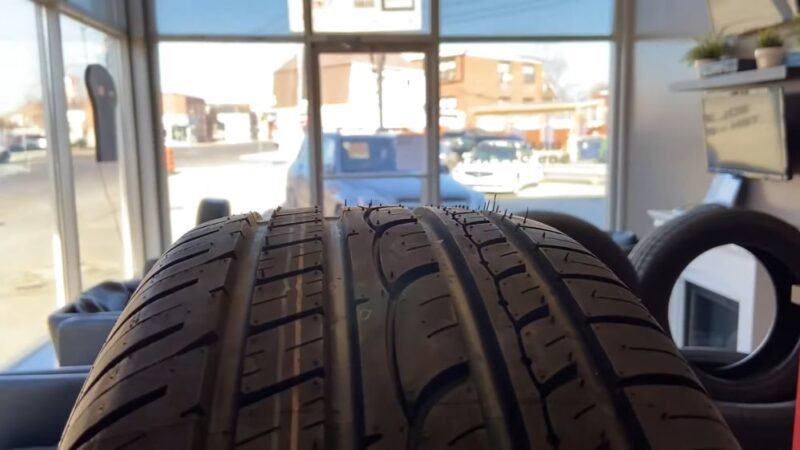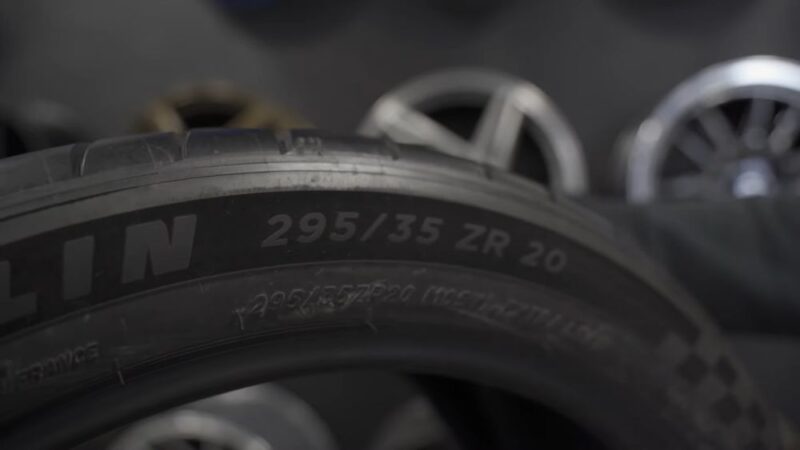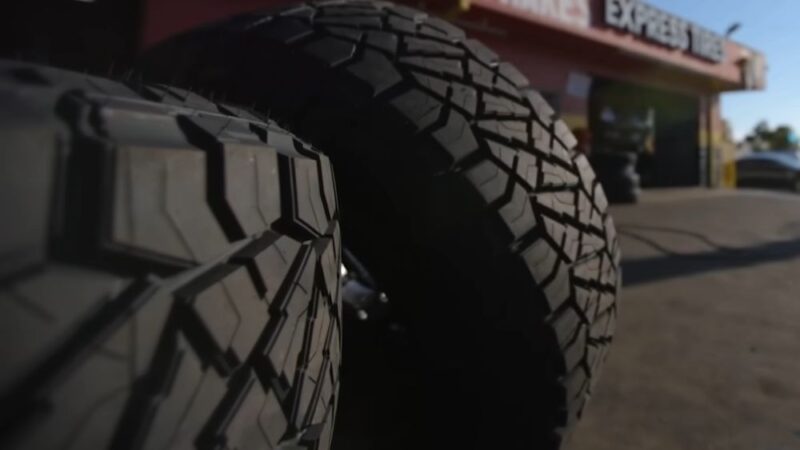In the world of automobiles, certain terminologies can sound rather technical and challenging to the everyday driver. One such term that often comes up, especially when buying tires, is the “tire aspect ratio.”
Although it may seem like intimidating jargon at first, understanding the tire aspect ratio is quite straightforward. And more importantly, it’s essential for every driver, car enthusiast or not, to comprehend. Let’s break it down in simple terms.
An Overview
When you look at the sidewall of your tire, you’ll notice a series of numbers and letters. This combination provides crucial information about your tire’s size, type, and performance characteristics. One of these numbers refers to the tire’s “aspect ratio.” But what does it mean?
The Basics

The tire aspect ratio is a number that represents the height of the tire’s sidewall as a percentage of its width. It’s that simple! Let’s look at an example: if a tire has an aspect ratio of 60, this means the tire’s height is 60% of its width.
Importance
Why does this matter? The aspect ratio can significantly impact your vehicle’s handling and ride comfort. A lower aspect ratio (like 35 or 40) typically means a shorter sidewall, which can offer more precise handling but a stiffer ride.
On the other hand, a higher aspect ratio (like 70 or 75) indicates a taller sidewall, providing a smoother ride but potentially less precise handling.
Decoding the Numbers
Reading the Sidewall
When examining your tire, you might see a sequence like “225/65R17.” In this case, the “65” is the aspect ratio. The first number (225) indicates the tire’s width in millimeters, the “R” signifies that it’s a Radial tire, and the last number (17) is the diameter of the wheel in inches.
Choosing the Right Ratio
The right aspect ratio for your vehicle largely depends on your driving preferences and the vehicle type. Sporty cars might opt for a lower aspect ratio for sharper handling, while a family SUV may go for a higher one to ensure a comfortable ride.
It’s always a good idea to stick to the manufacturer’s recommendations when replacing tires, whether they are cracked, pierced, or suffered some other type of physical damage.
Impacts of Changing Aspect Ratios

It’s tempting to experiment with different tire sizes and aspect ratios to change your car’s appearance or handling. However, before making any changes, it’s essential to know the potential consequences.
Performance Implications
Handling and Ride Comfort
As previously mentioned, the aspect ratio can influence your car’s handling and comfort. A tire with a low aspect ratio might improve cornering ability due to its stiffer sidewall, but this can also make for a bumpier ride.
Conversely, a high aspect ratio tire will cushion the ride but might not feel as responsive during spirited driving.
Fuel Efficiency
Changing the tire aspect ratio can also influence your vehicle’s fuel efficiency. Generally, tires with higher aspect ratios have a larger rolling resistance, potentially reducing fuel efficiency.
However, many other factors, such as tire tread design and rubber compound, can also play roles, so it’s essential to consult with a tire expert before making any decisions.
Safety Concerns

Potential for Tire Rubbing
One major safety concern when changing aspect ratios is the potential for the tire to rub against the vehicle’s body or suspension components. This can lead to premature tire wear (which can be noticed based on wear bars) or even a blowout in severe cases.
Braking and Stability
Another safety concern is how a change in aspect ratio might affect your vehicle’s braking and stability. For instance, a tire with a too-low aspect ratio might not have enough sidewall flex, affecting braking performance.
Similarly, a tire with a very high aspect ratio might not provide enough stability, especially during sudden maneuvers.
The Verdict
The tire aspect ratio is more than just a number on the sidewall. It’s a critical determinant of how your vehicle performs, feels on the road, and even its safety.
Importance of Manufacturer Recommendations

Sticking to the Basics
Car manufacturers spend significant time and resources determining the optimal tire size and aspect ratio for each vehicle model. These recommendations are based on extensive testing to ensure the best balance of performance, comfort, and safety.
As such, it’s generally advisable to stick close to these recommendations when choosing replacement tires.
Exceptions and Customizations
However, there are situations where a slight deviation from the recommended aspect ratio might be desirable. For instance, someone looking to customize their car for specific performance or aesthetic reasons might opt for a different tire size. In such cases, consulting with a tire professional and doing thorough research is crucial.
Making an Informed Decision
Research and Expertise
Before opting for a purchase or change, arm yourself with knowledge. Reading up on aspect ratios, consulting your vehicle’s manual, and even online forums can give you a clearer picture of what to expect. Most importantly, talking to a tire specialist can provide insights tailored to your specific needs and vehicle.
Test Before Committing
If you’re considering a change in tire aspect ratio, it might be beneficial to test drive a similar vehicle with the desired tire setup, if possible. Feeling the difference firsthand can offer a more concrete understanding of potential changes in performance, comfort, and safety.
The Evolution

Over the years, the automotive industry has seen shifts in popular aspect ratios, reflecting changes in vehicle design, driving preferences, and technological advancements. Informing yourself about its evolution can provide context for today’s choices.
Past Trends
Classic Cars
Back in the 1960s and 1970s, vehicles predominantly had higher aspect ratios, such as 80 or even 85. These vehicles had balloon-like tires, which gave a very cushioned and comfortable ride, ideal for the large sedans and luxury cruisers of the era.
Transition Phase
By the 1980s and 1990s, as cars started to become more performance-oriented and designs became sleeker, the trend began to shift towards medium aspect ratios like 70 and 65. This was a balance between the older, comfort-oriented designs and the emerging demand for more responsive handling.
Modern Era and Beyond
Today’s Standards
Today, with the proliferation of various car types, from SUVs to sports cars, aspect ratios vary widely. However, there’s a noticeable trend towards lower aspect ratios in performance and luxury cars, often ranging from 55 down to 30, catering to drivers who prioritize handling and aesthetics.
Future Predictions
With ongoing advancements in tire technology and materials, it’s likely that we’ll see even more diversity in aspect ratios in the future.
As electric vehicles become mainstream and the emphasis on aerodynamics and efficiency grows, tire designs will evolve to meet these new requirements, potentially leading to innovative aspect ratios we haven’t seen yet.
The Global Perspective

Different parts of the world, due to varying road conditions, vehicle preferences, and driving cultures, can have different trends in tire aspect ratios.
European Choices
Performance and Precision
European cars, especially those from Germany, Italy, and the UK, are often associated with precision engineering and a penchant for performance.
Thus, it’s not surprising that many European vehicles, particularly luxury and sports models, opt for lower aspect ratios, ensuring responsive handling on those scenic winding roads.
Caveats
However, given Europe’s diverse topography and road conditions, vehicles meant for more rugged terrains or areas with harsher winters might lean towards higher aspect ratios, offering more durability and comfort.
North America and Asia

Comfort and Versatility
North American vehicles, particularly in the US and Canada, often prioritize comfort, given the vast distances and highway-centric travel. Thus, a balanced aspect ratio, leaning towards the higher side, is common, especially in family sedans and SUVs.
Asia’s Diverse Needs
Asian countries present a vast array of road conditions, from ultra-modern highways in Japan and South Korea to more rugged terrains in parts of India and Southeast Asia. Hence, there’s a wide range of aspect ratios in play tailored to specific regional needs.
FAQs
Why is there no tire with a 100% aspect ratio?
Because it would mean that its height is equal to its width. This would result in a perfectly square tire profile, which is not practical for typical vehicular applications. Such a design would not provide the necessary traction, stability, or handling characteristics required for safe and efficient driving.
Are there specific aspect ratios best suited for off-road vehicles?
Yes, off-road vehicles often prefer tires with higher aspect ratios, typically in the 70-85 range. A taller sidewall can absorb impacts from rocks, potholes, and other obstacles better. It also allows the tire to flex more, which is beneficial when traversing rough terrains, as it provides better grip.
How does temperature or climate affect the choice of aspect ratio?
In areas with significant temperature fluctuations, especially cold climates with snow and ice, a higher aspect ratio might be preferred.
The taller sidewall can better absorb and handle the challenges of icy or rutted roads. Additionally, the increased sidewall height can assist in snow traction by allowing the tire to “dig in” a bit more.
Can I change my tire’s aspect ratio without changing the wheel size?
Yes, it’s possible to change it without altering the wheel diameter, but this would change the overall diameter of the tire. This can affect speedometer accuracy handling and could cause clearance issues in the wheel well.
If considering such a change, it’s crucial to ensure that the new tire size is compatible with the vehicle’s specifications.
Does tire aspect ratio affect the tire’s price?
Not directly. While it can influence the amount of material used in the tire, other factors like brand, tire type (performance, all-season, winter, etc.), tread design, and materials used have a more significant impact on price.
However, ultra-low-profile tires designed for high-performance applications can sometimes be pricier due to specialized design and construction.
How often should I check my tire’s aspect ratio?
Once you’ve purchased a tire, the aspect ratio won’t change, so you don’t need to check it frequently. However, if you’re considering buying new tires, replacing old ones, or exploring customization options, understanding and referencing the aspect ratio is crucial to ensure compatibility with your vehicle and driving needs.
Final Words
Tire aspect ratio, while initially seeming like a complex term, is a crucial component that significantly impacts a vehicle’s overall driving experience. By understanding what it signifies and the implications of changing it, vehicle owners can make more informed decisions that align with their driving preferences, ensuring both optimal performance and safety on the road.
Whether you’re a seasoned car enthusiast or someone merely looking to replace their worn-out tires, understanding the tire aspect ratio is invaluable. Here’s hoping this guide has shed light on this crucial concept, making your next tire purchase or vehicle customization a well-informed one. Safe travels!
